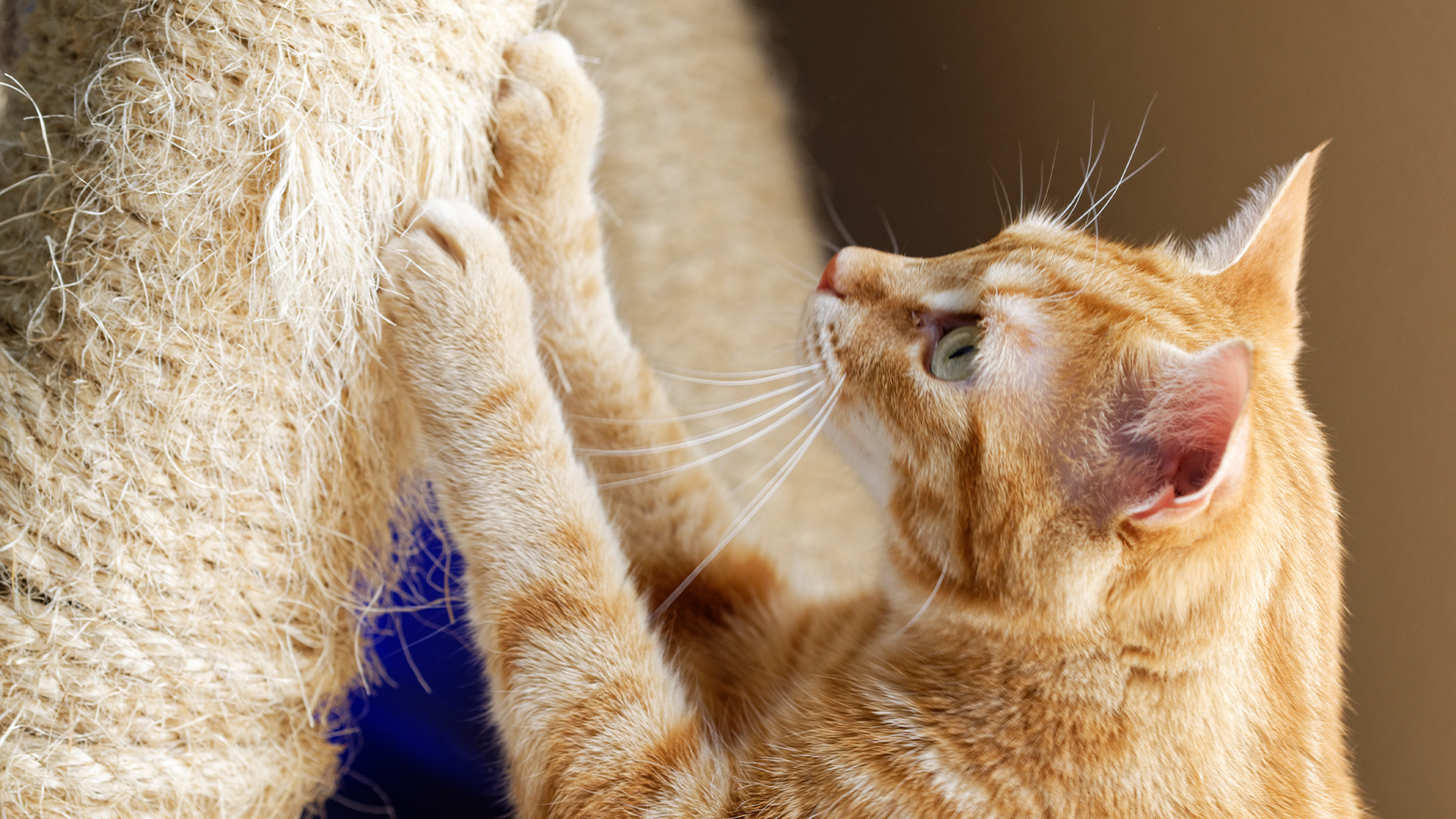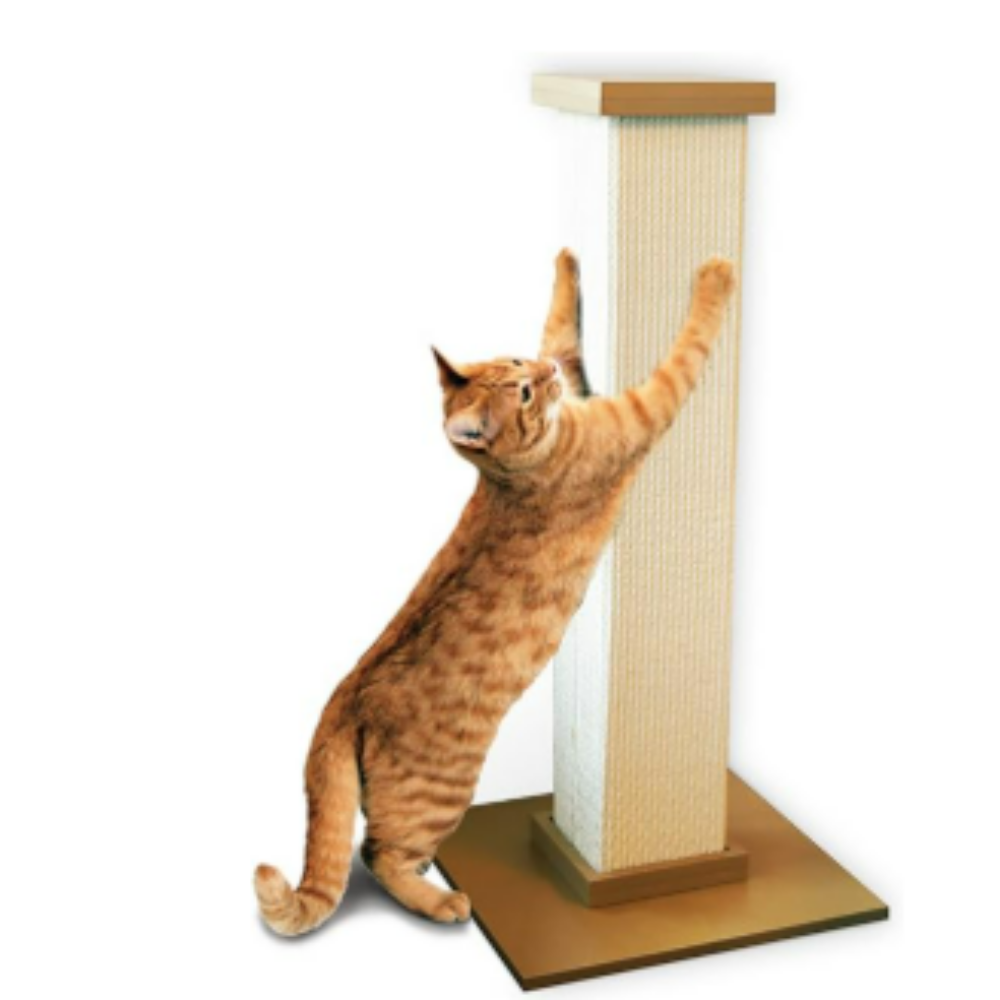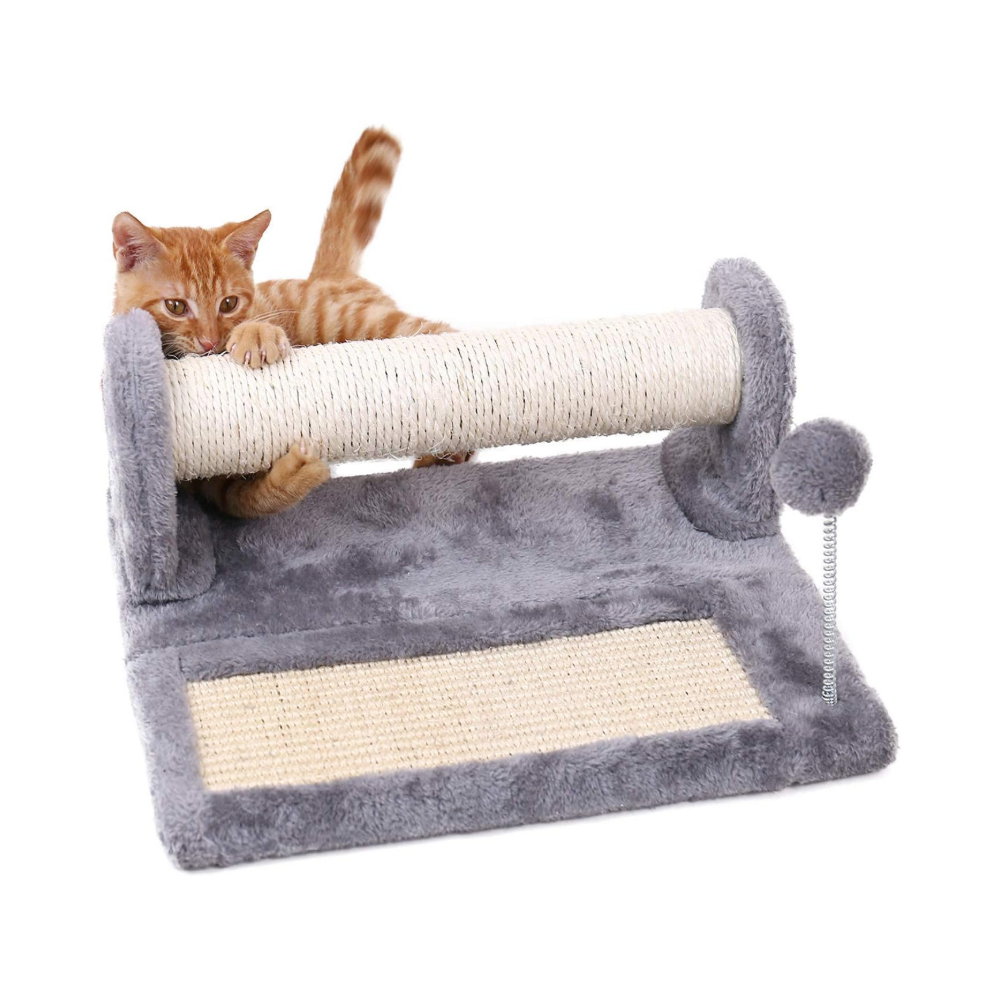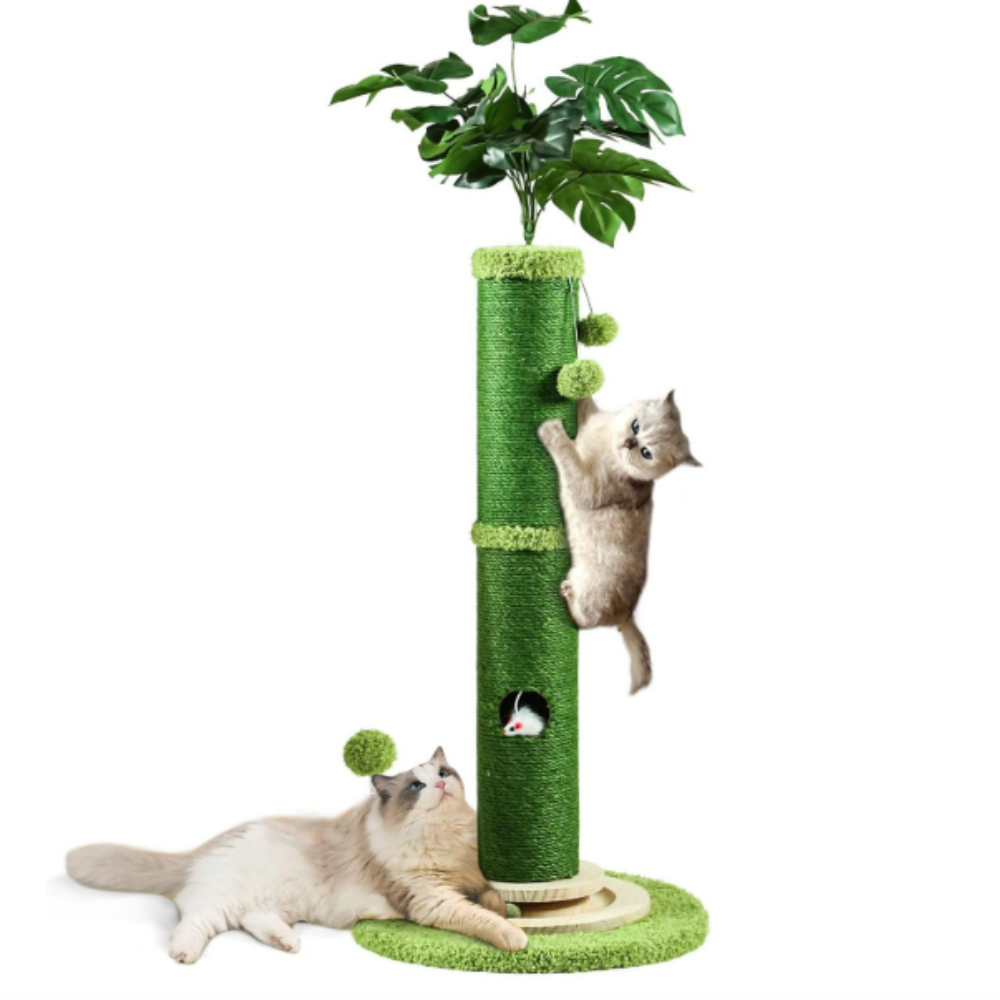Best cat scratching posts for every type of feline and home setup
The best cat scratching posts will have you waving goodbye to shredded furniture

The best cat scratching posts are designed to keep your cat’s claws in top shape, prevent boredom, all the while keeping your furniture scratch-free.
Scratching posts are must must-have item for cat owners, and if you have multiple cats then investing in multiple posts is definitely worth it. If you notice your cat is scratching your furniture, sometimes all it takes is placing a scratching post nearby to get them to move their focus onto their post.
But why do cats scratch the furniture, or why do they scratch the wall, for that matter? Cats scratch for a variety of reasons, including stretching muscles, marking territory, sharpening their claws, or simply out of boredom. Scratching is a natural behavior – and should be encouraged – just not on the furniture.
When putting this guide together, we took into account the quality of the materials, size, stability, and how much scratching surface was available to round up the seven best options on the market right now (spoiler alert: the SmartCat Pioneer Pet Ultimate Scratching Post was our favorite!)
Let’s check out which others made the list and keep reading till the end, as we’ve got expert advice from Dr Hannah Godfrey on how to choose the best scratching post for your cat.
Best cat scratching posts

Best overall cat scratching post
Pet parents are in love with this product, and it’s not hard to see why. This 32-inch post is tall enough to allow larger cats to fully extend their bodies and stretch their muscles while scratching. It also has a sturdy 16 x 16-inch base that stops the post from tipping over.
With pet parents awarding this scratching post a strong 4.7 out of five stars on Amazon, it’s clear there’s a lot to love. Buyers praise the sturdiness of this post and how durable and easy to set up it is.
Reasons to buy: Sturdy, durable, and easy to assemble. Plus, the 32-inch height gives a great stretch.
Reasons to avoid: Expensive.

Best budget cat scratching post
If you're looking for an affordable scratcher, then look no further. Measuring 31.5 inches in height, it's ideal for most sizes of cats and has a sturdy base that prevents the structure from tipping over when in use.
Featuring a replaceable dangling toy, this model offers a great two-in-one design that's ideal if you're wanting to cut down on the number of playthings your feline friend has scattered around the house.
Awarding this product 4.6 out of five stars on Amazon, cat owners love the mix of affordability and quality that this scratching post offers, praising the value for money. However, some reviewers mention that it can be wobbly.
Reasons to buy: Good quality yet affordable, and comes with a ball toy.
Reasons to avoid: Not suitable for heavier cats.

Best cat scratching post for kittens
This Pawz Road Cat Scratching Post and Pad is ideal for tiny claws thanks to its horizontal design, which makes it a lot easier for your kitten to start learning appropriate scratching behavior.
Reviewers note that this scratching post is easy to assemble, sturdy, and a huge hit with their cats, who love that it also comes with a bed and toy. While they’ve awarded it 4.3 out of five stars on Amazon, buyers do feel it’s a little on the small side, but this might be just what you need.
Reason to buy: Easy assembly, sturdy, and has a space-saving design.
Reason to avoid: Too small for large cats.

Best cat scratching post for large cats
If you have a large breed cat, this is the perfect scratching post. Standing at 42 inches tall, it gives more than enough space for even the tallest of cats to stretch and scratch. It also has two interactive balls for cats to play with a small mouse hole at the bottom.
Reasons to buy: Durable and tall enough for large cat breeds.
Reasons to avoid: Does not come with written assembly instructions.

Best cat scratching post for small spaces
If you're keen to minimize clutter, then this wall-mounted version is well worth considering. One of the great benefits of this design is that it can be mounted at any height, meaning you can customize it to suit the size of your cat to provide the ultimate stretch.
Made from all-natural and sustainable materials, this wood and sisal scratching board has a simple, minimalist design with a neutral color palette that will blend seamlessly into any home.
Reasons to buy: Provides a great stretch and has a modern design.
Reasons to avoid: A little lacking in durability.

Best for multi-cat households
If you have more than one cat in the family, then this scratching post collection is well worth the investment.
Featuring three sisal-wrapped scratching posts, each with its own unique design, this scratching post tower also comes with ball and mouse toys, providing plenty of entertainment.
At just over 19 inches tall, it's ideal for both kittens and cats, and the sturdy design means you don't have to worry about it toppling over. It's compact, attractive and can be easily vacuumed or spot cleaned as needed.
Reasons to buy: Sturdy and stylish design with three scratching posts and dangling toys.
Reasons to avoid: Toys can come loose.

Best cat scratching post to file nails
This scratching post is excellent at filing your cat's nails. It also has a grooming brush wrapped around the base to offer your cat gentle grooming sessions. It is made of natural sisal materials to help keep your cat's nails in good shape.
Reasons to buy: Multiple attachments, including a scratching post, grooming brush, and interactive balls.
Reasons to avoid: May be too small for large cats.
How we chose the best cat scratching posts
When picking the best cat scratching posts, there were several key areas that we chose to focus on.
Quality of materials: Wherever possible, we selected models with sisal scratching posts. Known to offer an outstanding scratching surface for cats, sisal feels good under their claws and is highly durable.
We also wanted to include a durable cardboard option with impressive functionality as once again, this provides a superior scratch when compared to other materials, such as carpet.
Size: Cats tend to favor vertical scratchers that are at least 24 inches high as not only do they get the opportunity to sharpen their claws but a scratcher of this height provides them with a chance to have the kind of big stretch their muscles need.
For this reason, we’ve largely focused on vertical scratchers that meet or exceed this requirement with a few shorter options to cater to smaller cats and kittens.
Scratchable area: We favored models with the greatest amount of scratchable surface area to ensure your cat has plenty of room to sink their claws into.
Stability: The last thing you want is a scratching post that can be tipped over easily, and while that can happen even with the most stable posts if you have a large cat who’s a vigorous scratcher, we’ve chosen models that the majority of reviewers describe as being sturdy.
Here’s more information on how we test, review, and rate products.
How to choose the best cat scratching post

There’s nothing more disheartening than investing in a cat scratching post only to see your fussy feline give a haughty flick of the tail and walk straight towards the side of your sofa. So what should you look out for to better the odds of your pet actually making use of it?
Material: Consider what the scratching post is made of. There’s a dizzying array of materials available, but what might appeal to you might not appeal to your cat. Sisal fabric is a great option because it’s heavy-duty and shreds under your kitty’s claws in the same way the bark of a tree would.
Try to avoid carpet-covered scratching posts, as you’re trying to encourage your cat to go for the scratching post and not your floors, so a different material is best.
Sturdiness: Select a scratching post that’s sturdy and doesn’t wobble or move about. The reason cats like sofas and trees is that they stay stable when scratched, which allows them to safely sharpen their claws. Look for posts that have solid bases so they won’t topple over.
Size: Height and layout are important considerations, too. Cats tend to favor vertical scratching posts because they allow them to stretch out, but if you’ve ever seen pulls in your carpet, then you know they’re not averse to scratching horizontally from time to time either. Providing a tall and flat scratcher can be a great way of covering your bases.
Added features: A cat scratcher with features can be a great investment that keeps your kitty amused for hours. Think multi-level cat trees that offer platforms, fluffy or sisal hanging toys, hammocks, ramps, and poles. Let your cat’s personality guide you as to whether a maxed-out model is the way to go.
Product | Price | Best for |
$49.99 | Overall | |
$22.49 | Budget | |
$24.99 | Kittens | |
$47.99 | Large cats | |
$24.79 | Small spaces | |
$35.16 | Multiple cat household | |
$39.99 | Nail filing |
Other cat scratching posts to consider
There were two other cat scratching posts that we loved but didn't make the list. The PetFusion Ultimate Cat Scratch Lounge is great if you're looking for a scratching post that also doubles as a place for your cat to relax.
The Cat Scratching Post & Couch-Corner is great for drawing your feline's attention away from the couch and onto their scratcher. This one slides right under the couch. However, some have said that cats can easily slide it out of place.
Do cats scratch for attention?
Cats are complex beings, just like us, and they scratch for lots of different reasons. It can be to stretch their muscles, keep their claws sharp, spread their scent, and sometimes, yes, just for attention.
"If you encourage them to scratch by giving them fuss and praising them, they’ll continue to do it," explains Dr Hannah Godfrey, "But did you know that it’s not just positive attention that can fuel this behavior? If you shout, scold them, or pick them up and move them away, you could still be inadvertently encouraging them."
The key to stopping furniture scratching is to give your kitty a better alternative, which means scratch posts, mats, or trees. From there, it's all about reinforcing the behaviors you want to see, explains Dr Godfrey.
"When they use these items to scratch, praise them and give them a fuss or a treat. If they claw at the furniture, carpet, or somewhere else you’re not so keen on, ignore the behavior. They'll soon make the association that it's better to scratch in those purpose-built places!"
What scratching posts do cats like best?

Different cats seem to like different types of posts, but there are some generalities.
“Research has shown that most cats prefer a scratching post made of rope/sisal,” explains Dr Joanna Woodnutt. “It should be vertical, and tall enough that they can stretch out fully. It should also be stable – they aren’t going to use it if it wobbles when they try!”
But that’s not to say rope/sisal is perfect for all.
“Cardboard is preferred by older cats, so it’s worth trying a couple of materials if your cat isn’t enjoying their scratching post,” Dr Woodnutt advises.
One way of figuring out what your cat may like is to consider where your pet is currently scratching.
“If your cat is scratching furniture, look at what they’re scratching and where – is it a vertical surface or horizontal one? What material is it?” Dr Woodnutt continues.
“You can try to replicate this when choosing a scratching post for your cat. Placing a scratching post near where your cat is already scratching will help them use it, too – you can always move it (slowly!) later once your cat reliably uses the post.”
What is the best height for a cat scratching post?
First of all, look at your cat!
“A scratching post needs to be tall enough that a cat can stretch out fully when using it,” Woodnutt advises. “For most cats, 90cm (36 inches) is plenty, but if your cat is a larger breed, you’ll need a larger post. Since posts of this height can be unstable, look for one with a large base or an upper bracket to attach, or one that is part of a cat tree.”
Read next: Vet’s guide to cat nail clipping or ways to protect furniture from pets

Hannah graduated from the Royal Veterinary College in 2011 and began work straight away at a busy mixed practice. Initially, she treated all species, but focused on small animals from 2014. She has a passion for soft tissue surgery, ultrasound, and canine and feline dentistry, having completed additional training in these areas.
She then began working at a smaller, independent practice close to home, in order to devote more time to her other love – writing comedy fiction. In February 2023, she moved from permanent clinical vet work to become an Editor for a global medical communications company. She hasn't given up clinical work altogether, though, and still does regular locum shifts at her local vet practices.

Dr Joanna Woodnutt qualified as a veterinarian from the University of Nottingham where she then went on to practice companion animal medicine in the Midlands. She really took to the consulting side of things and helping clients with medical problems such as dermatology, behavior and nutrition - anything that involved helping clients understand their pets better.
Edited by Georgia Guerin and Megan Milstead.
We regularly review our buying guides to ensure the products are relevant, available and up to date. This page was last updated in May 2025 by Alexis de Leaver.
Get the best advice, tips and top tech for your beloved Pets

Our staff writer, Alexis, is a digital content specialist and passionate pet advocate with a background in lifestyle journalism. Raised in a lively home filled with cats, dogs, and fish, she channels her lifelong love for animals into creating helpful, research-driven content for pet parents.
She collaborates with veterinary professionals to ensure accuracy and is currently pursuing additional pet care certifications.
A graduate of Bowling Green State University, Alexis has contributed to major UK and US publications, including Daily Mail, Space.com, and Black Women Rising Magazine.
- Dr Joanna Woodnutt MRCVSVet
- Kathryn WilliamsFreelance writer
- Dr. Hannah Godfrey BVetMed MRCVSVet
